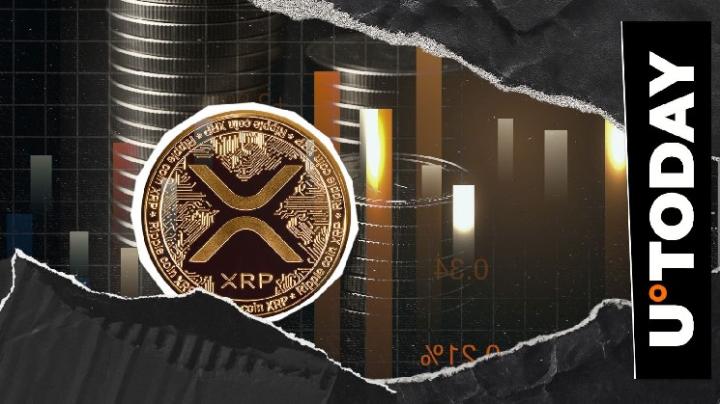Hyperliquid
This generation of Perp DEX is fundamentally different from the "GMX, DYDX" generation of Perp DEX. Since the core is still Perp DEX, the title will still use Perp DEX to discuss it.
Starting as "Perp DEX", it quickly rose to prominence and became known to everyone.
Hyperliquid is a Layer 1 public blockchain, similar to Ethereum and Solana. Hyperliquid has a grand vision: to be a blockchain that supports all financial services and a high-performance on-chain financial transaction infrastructure . Hyperliquid offers both perpetual contract trading and spot trading, and has recently been developing the stablecoin USDH.
Its development path can be glimpsed through the HIPs, from HIP-1, HIP-2, to HIP-3, and most recently, the community proposed HIP-4. HIP-4 aims to create "Event Markets" similar to Polymarket, further expanding Hyperliquid's product boundaries. Simply put, it's a binary market traded on HyperCore. Unlike traditional perps, events don't rely on continuous oracles or funding; prices are determined entirely by trading behavior. This proposal has also received Jeff's approval. (The discussion of HIPs will not be expanded here; a dedicated research article will be written later.)
Hyperliquid is affectionately referred to by the community as " Binance on Chain ," a name that has caused some anxiety among Binance executives. Alternatively, Hyperliquid could be called " AWS of Liquidity ," a more sexy name.
Hyperliquid L1 technical architecture and performance
Working from first principles, the Hyperliquid team has developed a high-performance Layer-1 blockchain specifically designed for transactions to address issues such as poor liquidity, poor trading experience, opacity, and fraud in the crypto market. The architecture consists of two components: HyperCore and HyperEVM .
HyperCore is an on-chain matching engine responsible for placing orders, matching, margining, and clearing on the Central Limit Order Book (CLOB), all performed on-chain. Hyperliquid was right to choose CLOB over an AMM. The previous AMM, Perp DEX, offered a poor experience. CLOB is also a common choice among mainstream Perp DEXs. (Aster, Lighter, and edgeX also use CLOB, with Aster using both AMM and CLOB.)
HyperEVM is a general-purpose smart contract layer that shares consensus with HyperCore, maintaining compatibility with the Ethereum EVM and facilitating integration with other applications to exchange state. This consensus utilizes a modified HyperBFT (Proof of Stake) algorithm from HotStuff, ensuring consistent transaction order across the entire network without relying on off-chain matching.
This tightly coupled sharding design delivers speeds approaching those of centralized exchanges: median transaction latency is approximately 0.2 seconds (99% of transactions are <0.9 seconds), and peak throughput reaches 200,000 transactions per second (according to HyperLiquid's official data). Hyperliquid's block generation and confirmation speeds are extremely fast, achieving sub-second finality. Thanks to its fully on-chain order book and matching, it offers high transparency while maintaining exceptional performance, truly achieving " on-chain CEX speeds ." Currently, Hyperliquid has not explicitly adopted EigenLayer's AVS (Active Verification Service) solution, relying primarily on its own chain and consensus to ensure performance and security. These performance and security are directly provided by its own chain , independent of the ETH restaking network. As of September 2025, Hyperliquid L1 has 24 active nodes.
User Experience and Interface
Hyperliquid offers a trading experience consistent with leading CEXs. The user interface features a traditional order book and candlestick chart design, supports advanced limit orders, stop-loss orders, and other advanced order types, and includes professional trading tools. Trade settlement is near-real-time (sub-second), and the interface provides smooth, lag-free operation. It caters to both professional and retail traders. The click-like notifications for opening and closing positions are also very pleasant.
Users can use a web3 wallet for permissionless access and non-custodial transactions , but their assets must be bridged to Hyperliquid L1. Currently, USDC can only be deposited via the Arbitrum chain. This generates an Agent wallet (which only grants trading permissions, not transfer permissions, and stores private keys locally). Opening and closing positions requires no signatures, providing a seamless experience. Users are generally unaffected by this Agent wallet.
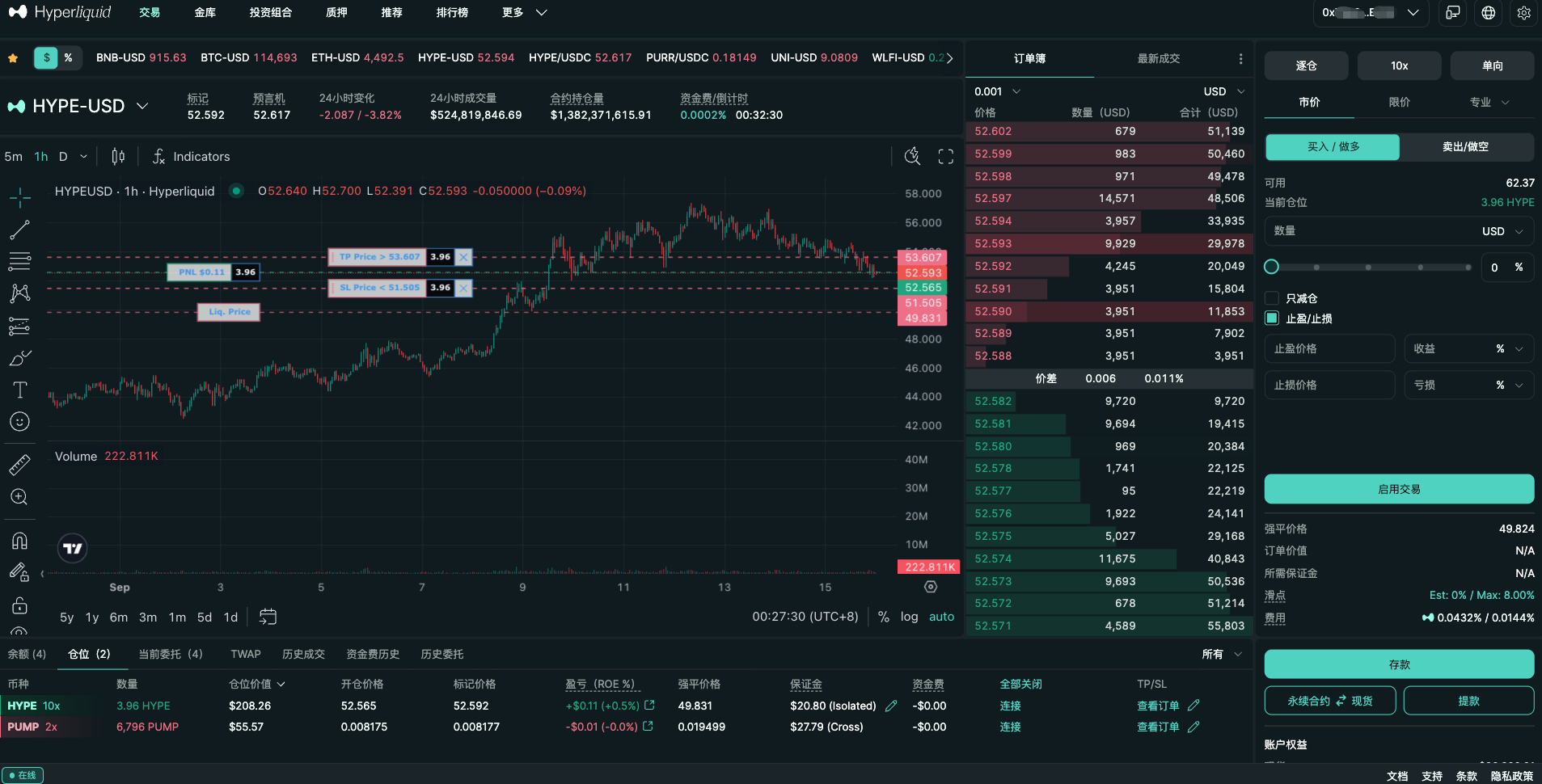
Hyperliquid maintains a strong community connection and is responsive. For example, in July 2025, after a brief API outage caused a brief downtime, the team quickly compensated users for approximately $2 million in losses, demonstrating a commitment to rapid response and accountability. This has generated positive user feedback and widespread community praise.
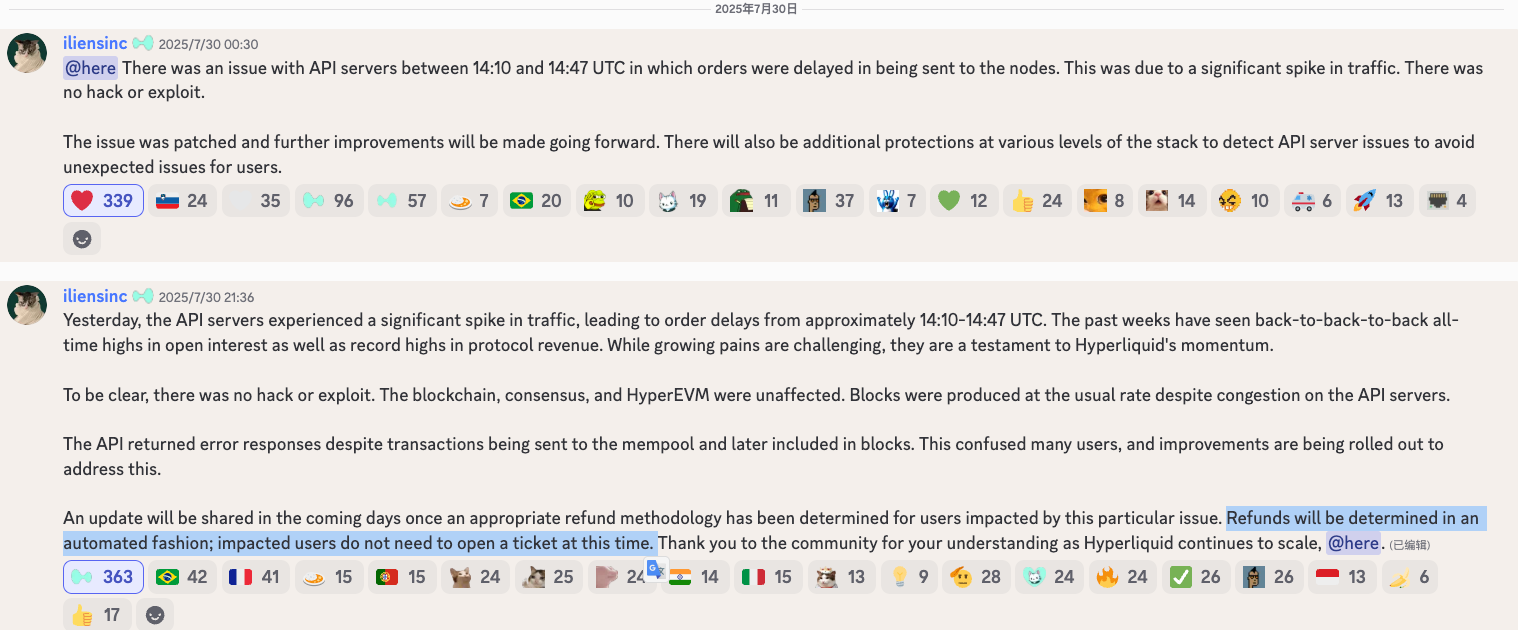
Liquidity and Trading Depth
As a leading provider of perpetual swaps, Hyperliquid boasts exceptionally deep liquidity and trading volume. Its daily trading volume regularly reaches billions of dollars. In July 2025, perpetual swaps trading volume reached approximately $319 billion, pushing the total perpetual swap volume for the month to a record high of $487 billion. Hyperliquid alone accounted for approximately 65%. Throughout 2025, Hyperliquid's market share stabilized between 75% and 80%, far exceeding its competitors. In August 2025, perpetual swaps trading volume accounted for 13.85% of Binance Futures, a record high. (Data from The Block)

The platform supports over 100 trading pairs, covering both mainstream and long-tail assets, with rapid listing responses. Thanks to its on-chain order book model, users' order depth and matching results are transparently visible. Coupled with the onboarding of professional market makers and the introduction of the HLP market-making pool, Hyperliquid achieves exceptionally low spreads on mainstream cryptocurrencies and minimal slippage for large trades.
Its total locked value (TVL) is also significantly higher than its competitors: as of September 2025, the platform's TVL is approximately $2.7 billion. This massive amount of capital and depth enables Hyperliquid's contract market to have trading depth and stable funding rates similar to Binance for most currencies.
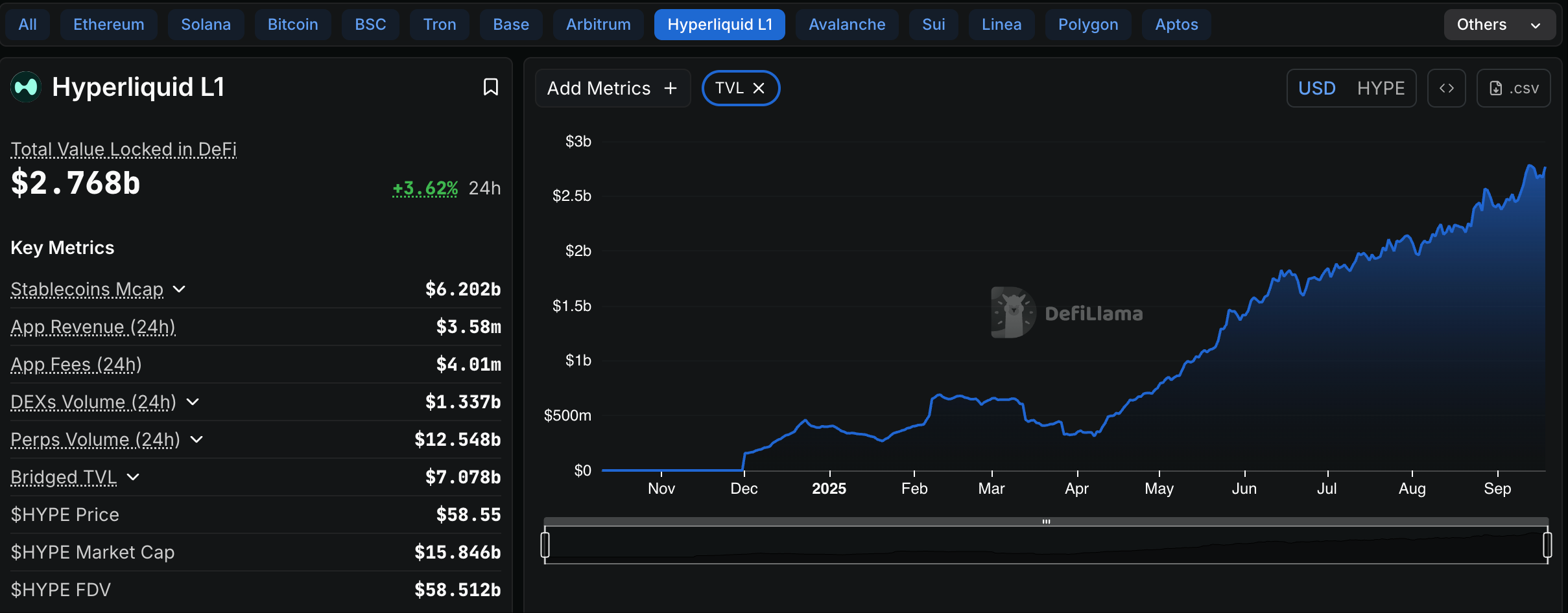
The fee structure and incentive mechanism are similar to those of CEXs. Hyperliquid's base trading fee is 1.5bps for Markers and 4.5bps for Takers , which is slightly lower than mainstream CEXs overall. Currently, users who stake HYPE tokens can enjoy fee discounts of up to 40% (with a minimum of 500,000 HYPE staked), similar to Binance's VIP tier with BNB holdings.
Vaults
Hyperliquid's treasury consists of three parts: AF, HLP, and user treasury.
Protocol Treasury A: Assistance Fund (AF) AF serves as the protocol's "treasury" and buying engine. It is primarily used to repurchase (and often burn) HYPE tokens; it is also used to compensate users in special events (approximately 2 million USDC was automatically compensated following the API outage on July 29, 2025). AF's assets are primarily HYPE, reducing slippage and execution complexity during large transactions and compensation.
Approximately 93% of platform fees are injected into the fund to repurchase and burn HYPE tokens, with an additional 7% allocated to the HLP market-making pool. This design creates a positive flywheel: increased trading volume → increased fee revenue → more tokens are repurchased and burned (increasing token value) and the market-making pool benefits → attracting more users and liquidity .
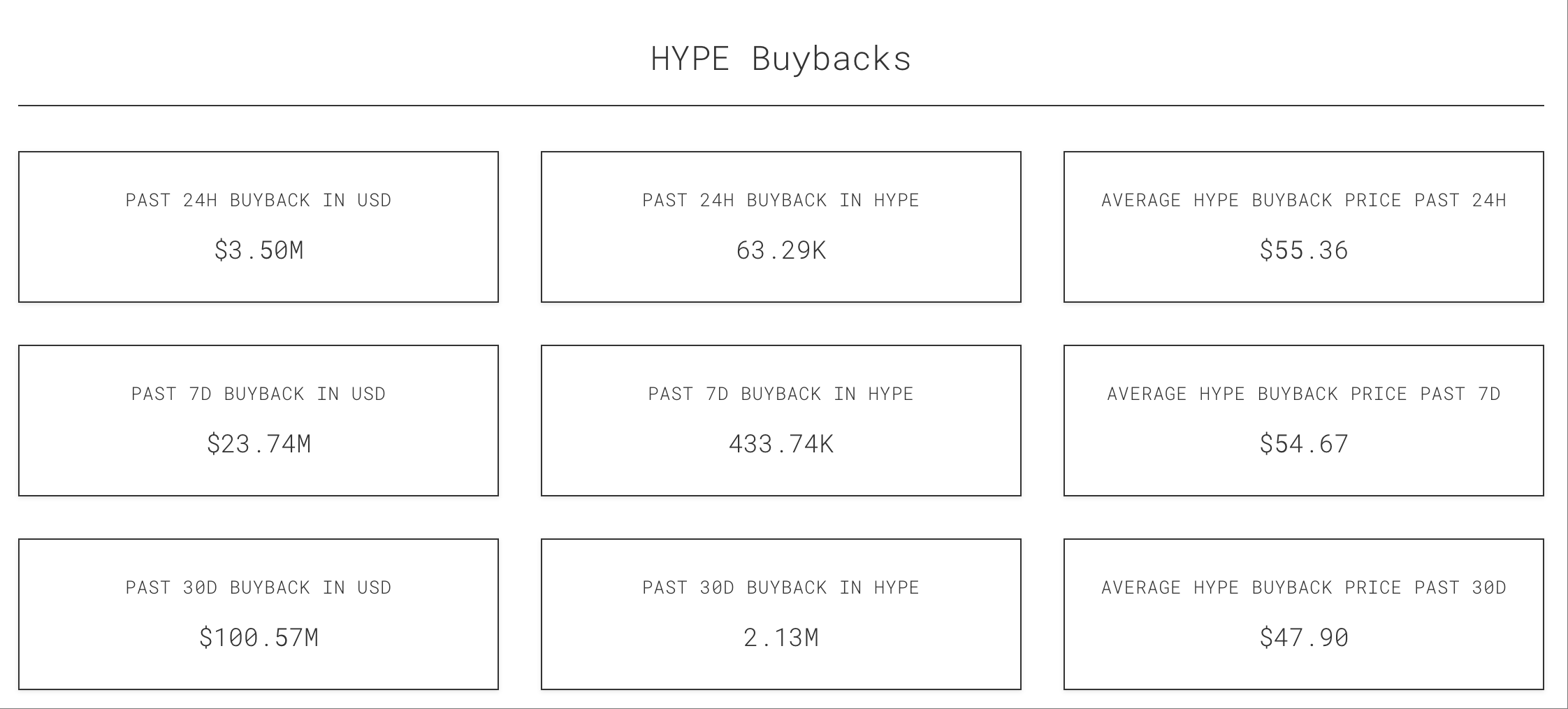
Data source: asxn
Protocol Vault B: HLP (Hyperliquidity Provider)
HLP is positioned as a protocol-level market-making platform with a liquidation backup (including the Liquidator component). Anyone can deposit USDC to participate in HLP's PnL distribution, with a current annual interest rate of approximately 6.7% and no management or performance fees (unlike user vaults). Deposits are redeemable four days after deposit. The HLP mechanism ensures open and transparent market-making liquidity, reducing the reliance on private agreements with market makers in traditional markets.
User Vaults
It consists of a Vault Leader (a manager who trades with their own strategy) and a Depositor (a contributor who deposits funds and shares the PnL). This system is similar to the copy trading systems of secondary funds and CEXs. The Leader takes a 10% commission (only on profitable trades), while the protocol vault does not take a commission.
Community Development and Team
Community Development: Hyperliquid has a highly active global community, with a stronger presence in the European and American regions than in the Chinese-speaking region. The official platform is highly active on social media platforms like X (Twitter), and has consistently maintained a leading market share, creating a network effect in the perp DEX space.
The heated community discussion is also reflected in the token's value. In November 2024, Hyperliquid airdropped its genesis token, HYPE, totaling 310 million (31% of the total supply) to early adopters. Following the airdrop, HYPE's total market capitalization reached billions of dollars, reaping rich rewards for early community participants and establishing a positive reputation within the decentralized community. User growth is primarily driven by word-of-mouth and superior product acquisition, rather than excessive marketing. This is somewhat similar to Tesla.
Team Background and Funding: Hyperliquid was founded by Jeff Yan, a Harvard educated formerly of Hudson River Trading, a traditional financial high-frequency trading firm. The core team consists of only approximately 11 members, known for their small, elite team's rapid iteration. According to Jeff, the project has been entirely self-funded since its inception, rejecting venture capital investment to ensure independent decision-making and prioritize user interests. This " no VC, no private placement " approach has fostered community trust and enabled the team to focus more on technology and products. Most team members hail from world-renowned universities and leading tech and financial institutions, and reportedly have attracted several senior executives from traditional finance to serve as advisors, including a former CEO of a major bank on the board. Market sources suggest Hyperliquid may have raised funds through affiliated listed entities, demonstrating its substantial financial strength (the platform's treasury holds over $500 million in reserves). Overall, the Hyperliquid team is low-key and pragmatic, leveraging their deep technical and trading background to achieve industry-leading status within two years. This background also explains their meticulous pursuit of product refinement and user experience.
The fundamental reason for rapid growth
There's been much discussion about the reasons for Hyperliquid's success. Beyond the aforementioned factors of a well-rounded team, exceptional product technology, and user experience, we can also explore the fundamentals of both "principle" and "technique," examining what Hyperliquiquit did right at different stages.
First, let’s look at it from the perspective of “ technique ”.
Phase 1: Airdrop Incentives
Before the HYPE TGE, there was an anticipation for an airdrop, with most users seeking to boost their trading volume to earn points and airdrops. At this point, Hyperliquid wasn't gaining much attention from mainstream CEXs and wasn't considered a competitor. Many assumed it would follow the same path as GMX and DYDX, fading into obscurity and lacking trading activity after the TGE.
Phase 2: Compliance and Regulatory Dividends
After the HYPE TGE, Hyperliquid's trading volume increased instead of decreasing, signaling a shift in sentiment. The consensus is that regulatory compliance pressures are hindering mainstream CEXs, such as Binance, in the European and American markets, making it difficult for them to operate. These lost users were taken over by Hyperliquid (as evidenced by the visitor distribution on the Hyperliquid website). Furthermore, some money exchanges, which struggled with KYC, have also found a suitable tool.
At this point, Hyperliquid was already considered a competitor by Binance, OKX, Bitget, and others, and they took some action to target Hyperliquid. (Traces of this can be found in the community, but I won't elaborate here.)
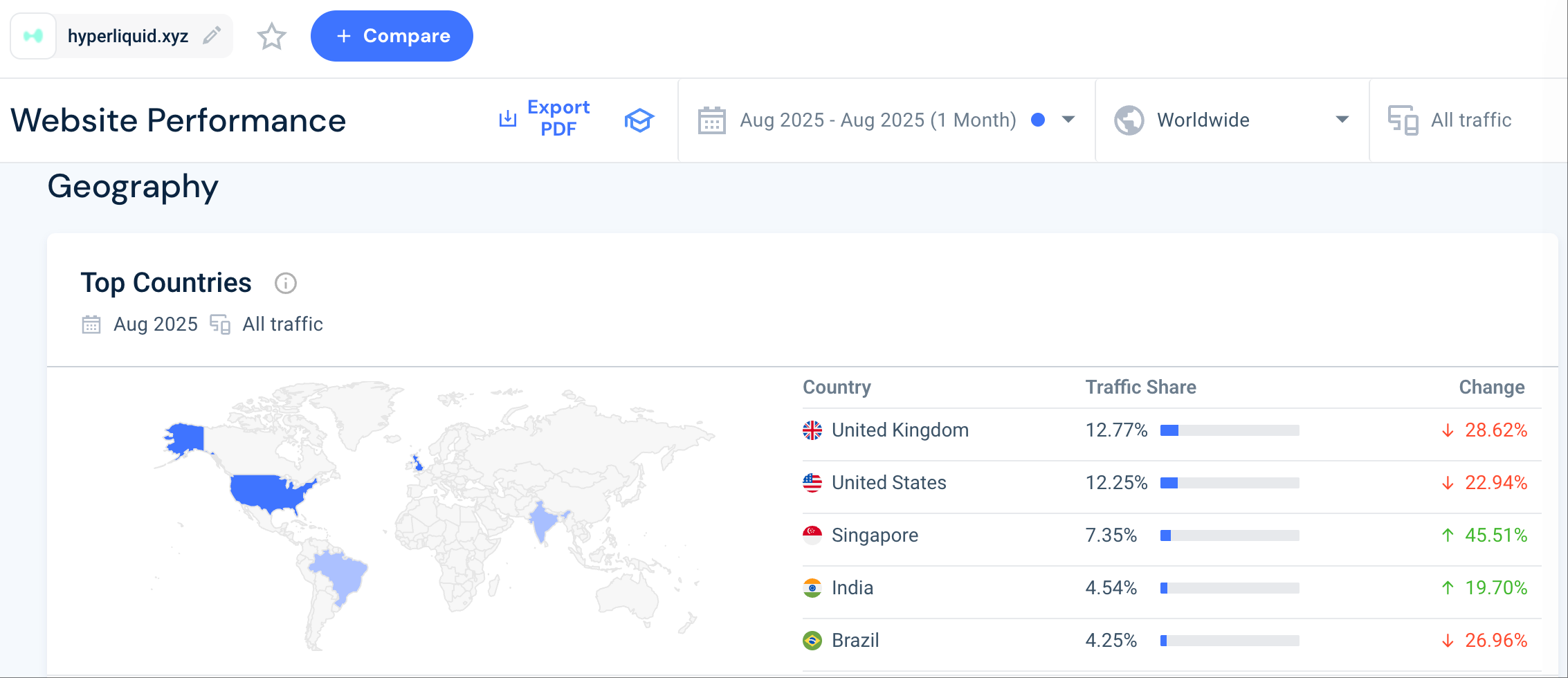
Phase 3: Build Codes - Channel Distribution is King
KOL rebates and affiliate programs are common user acquisition methods for CEXs. Besides branding, PR, community development, SEO, and campaign development, BD-driven KOL rebates are a crucial growth strategy for CEXs.
The percentage of users brought in by KOL rebates varies across CEXs, ranging from around 50% for Binance to around 70% for Bitget. Furthermore, smaller CEXs offer higher KOL rebates, as do their user and trading volume share. Many even offer 90%-100% rebates, driving growth through a "flywheel" of " taking customer losses and subsidizing rebates ."
Hyperliquid's commission rebate is only 10%, and only applies to the first 1 billion in trading volume. Based on an average fee rate of 3bps, if someone you invite contributes 300,000 in fees, you'll only receive 30,000 in revenue. Rebate invitations aren't the focus of Hyperliquid; Build Codes is.
Few people realize the true power of Build Codes: a distribution strategy with truly exponential potential. Developers no longer need to build high-performance order books or attract liquidity, as Hyperliquid provides the necessary infrastructure. Hyperliquid no longer needs to manage product promotion, user acquisition, or even product innovation, as all of this is delegated to the Builder Network. It's a bit like the Perp DEX, a Swiss team I previously worked for (with a UBS background) that spun out. They adopted a white label approach, which was the right direction, but unfortunately, the product wasn't very strong. Binance Broker and OKX's cloud exchange/nodes were similar solutions. The essential difference with Build Codes is its ease of access, low barrier to entry, and on-chain transparency.
Phantom Wallet, Axiom, UXUY, and PVP.trade have all integrated this solution. Phantom has already attracted approximately 40,000 new users, and PVP.trade has generated $7.5 million in daily revenue . I've also completed the development of a basic version of a perp DEX and plan to leverage my previous experience and network resources to drive growth. Interested parties are welcome to discuss this.
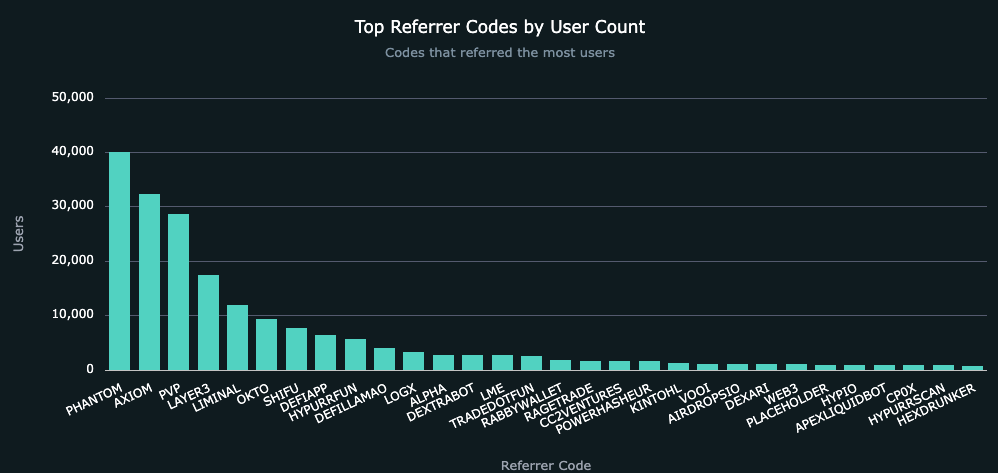
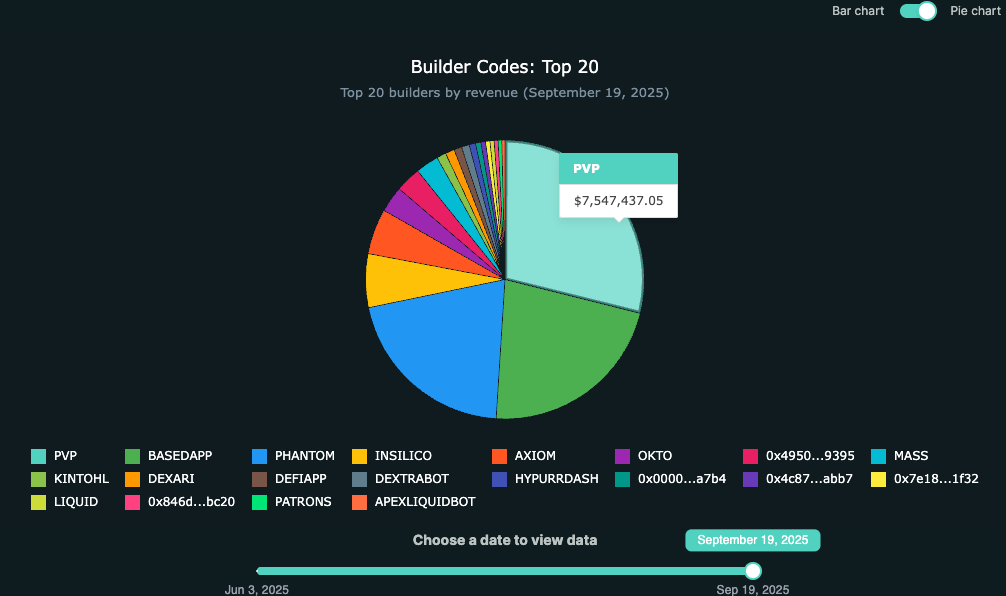
In addition to Build Codes, there are also the killer CoreWriter and HIP-3, but the threshold is slightly higher, so I will not elaborate on them here due to space limitations.
"Tao" - Those who have the Tao will have many supporters
While the above analysis of the reasons for Hyperliquid's success is quite detailed, it doesn't get to the heart of the matter. Many interpretations of Hyperliquid's success remain superficial.
But the essence can be summed up in one sentence: Hyperliquid embodies the " blockchain spirit "—openness, transparency, decentralization, and user sovereignty. Much like Binance's early days of carrying this banner against traditional finance, BTC maximalists, industry veterans, and ordinary crypto users alike are all on Binance's side. It's the true blockchain spirit that truly unites people.
From a user's perspective, many CEXs currently face issues such as centralized black boxes, customer losses, and trading against their users. CEX owners also face increasingly stringent regulatory compliance challenges. Consequently, many CEXs are turning to DEXs.
Therefore, Aster, the crown prince of Binance , was born.




